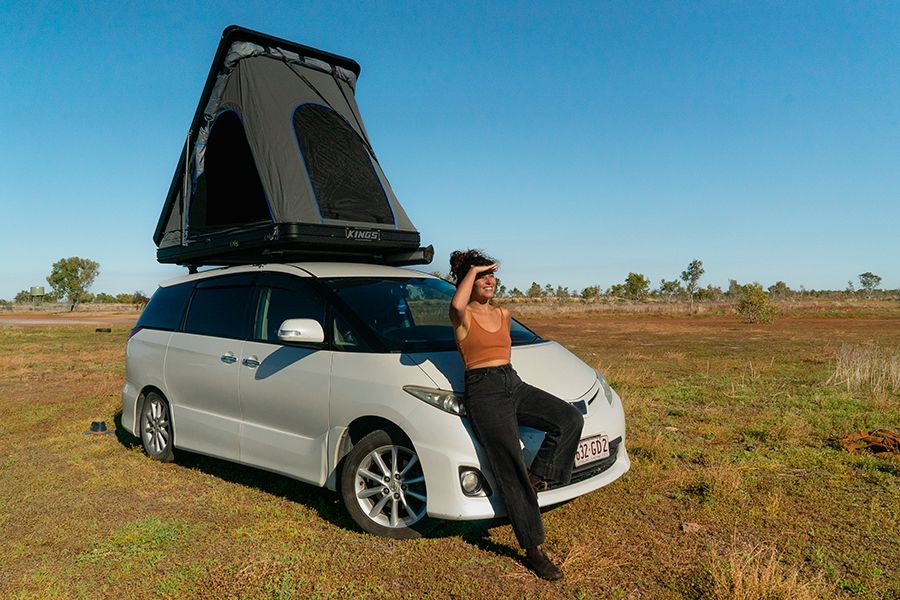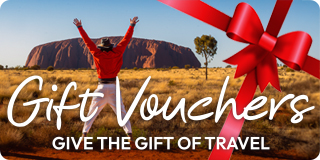What To Pack For Outback Australia
Wondering what to pack for Outback Australia? Comfortable layers, sun protection, and entertainment for those long drives are among the most important things! Every trip to the Outback will be different, but some essentials are non-negotiable. These are the things that will protect you against the elements, as the Outback is very remote and wild with sometimes extreme temperatures.
As long as you take the time to research and prepare, you will have the trip of a lifetime in the mystical Australian Outback!

What To Pack For Outback Australia
With vast, untouched landscapes, unique rock formations, fascinating wildlife, and intriguing ancient histories and cultures, the Outback of Australia is a once-in-a-lifetime destination. From the deserts and monoliths of the Red Centre, to the waterfalls and gorges of the Top End, to the reefs and beaches of Western Australia and more, otherworldly natural wonders are just waiting to be discovered in the Outback.
Before you visit the Outback, you'll want to do some research about your destination. Many places in the Outback are extremely remote so it's important to come prepared.
We've compiled an essential packing list for the Outback so you know what to expect! And if you're planning an independent camping and 4WD adventure without a tour guide, you'll have to be even more prepared. Let's discuss what to pack for Outback Australia!
Explore the Outback!

Clothes
When packing for Outback Australia, it's important to bring comfortable, breathable clothes and lots of layers. Though the Outback is a huge area and climates can vary, the weather can be extreme anywhere. Imagine hot, sunny days and cold desert nights where the temperatures can drop to below freezing! At any time of year, you'll want multiple layers of clothes so you can adapt to the weather. In winter you'll definitely need warm clothes, and even consider bringing a hat and gloves for those chilly sunrises and sunsets.
Waterproof clothes and a rain jacket are also ideal, especially in summer when rain is more frequent. Another important tip when packing clothes for the Outback: red dirt is everywhere! Wear clothes that you don't mind getting dirty. The Outback is all about wilderness adventures, so pack breathable, comfortable activewear that suits any weather and terrain.
Outback Australia Packing List: Clothes
- Comfy t-shirts
- Long-sleeve shirts to protect against sun and cold
- Warm jacket for nights and mornings
- Shorts
- Long pants
- Rain jacket
- Pyjamas
- Swimsuits
- Undergarments
- Hat, gloves, and scarf for winter nights

Footwear
You also need to have suitable footwear for Outback Australia. Comfortable hiking shoes are ideal as there are lots of amazing walks to try. If you're not going to tackle any big treks, regular sneakers are fine too as long as they have good tread.
Also pack a pair of sandals for swimming in waterfalls and visiting beaches in Darwin or the West Coast. A cheap pair of flip-flops may not cut it on the rugged terrain of various Outback national parks, so you may want a sturdier pair of outdoorsy sandals. Remember, everything will get covered in red dirt so beware of wearing white shoes!
Outback Australia Packing List: Footwear
- Good hiking shoes
- Comfortable sneakers or walking shoes
- Socks
- Sturdy sandals

Other Accessories
These other accessories will help protect against the elements in Outback Australia. Sun protection is key, even in winter as the sun is strong in the Outback! You'll always want to wear a wide-brimmed hat and sunglasses in addition to long layers and sunscreen. Some travellers also like to have a fly net to attach to their hats to protect against flies and insects.
Other essentials include a refillable water bottle and a quick-drying towel. Microfibre towels are a great choice as they roll up really small and take up minimal luggage space. They also dry super fast which is perfect for outdoor adventures.
Outback Australia Packing List: Accessories
- Wide-brimmed hat
- Fly net for hat
- Polarised sunglasses
- Refillable water bottle
- Microfibre towel

Toiletries
You'll also want to pack your essential toiletries when visiting the Outback. If you're heading to a city like Darwin, Adelaide, or Perth first, there will be plenty of shops where you can stock up on things. But if you're heading straight into the remote wilderness without stopping in a major city first, it's better to bring everything you need!
The Outback is very remote, with small towns scattered across the vast desert landscape. You may not be able to find specific supplies while out on your adventure, so be prepared and pack enough toiletries to last your time away from the big cities. Especially if you have special brands or medications that you need, you'll want to bring enough of those from home just in case.
Outback Australia Packing List: Toiletries
- Sunscreen
- Aloe vera in case you get sunburn
- Moisturiser and lip balm (the climate can be very dry)
- Insect repellant
- Medications
- All your basic essentials like toothpaste, shampoo, etc.

Electronics and Entertainment
The Outback is the perfect place to slow down, disconnect, and immerse yourself in nature, culture, and history. However, it's no secret that Outback Australia is absolutely gorgeous, so you'll want a camera or phone to capture the memories! Don't forget all your chargers as well. You may even want a portable power bank in case you're away from electricity for a while.
You may also want entertainment for those classic, long drives along dusty red Outback roads. Travel times in the Outback can be massive! Just the journey from Alice Springs to Uluru alone is around 5 hours, so pack headphones, a speaker, music, books, an iPad, a journal, or any other type of entertainment you choose. It can be fun to have a good book or a speaker in the evenings while you're hanging out at a campsite as well!
Outback Australia Packing List: Entertainment
- Camera
- Phone
- Chargers
- Portable power bank
- Headphones
- Other entertainment such as a book, journal, speaker, etc.

Bags
It's important to have good-quality, durable bags to store all your belongings in! Of course the size and number of bags you bring to the Outback will depend on the duration of your trip, but it's a good idea to have luggage that is lightweight, easy to carry around, comfortable, and convenient. Again, assume your bags might get dirty in the Outback so mentally prepare for that!
In addition to your main luggage, make sure you have a few smaller bags for day trips and camping tours. If you're joining any adventure 4WD tours in the Outback, there may be a luggage limit. Most guided tours only allow one soft overnight bag per person because of limited space, so ensure you have something to bring on excursions.
Outback Australia Packing List: Bags
- Durable luggage
- Luggage locks
- Small bag for day trips
- Soft backpack or overnight bag for multiday tours

Camping and 4WD Adventure Gear
We've already covered the essentials for an Outback packing list, but you'll need to add extra gear if you're planning an independent 4WD or camping adventure. Guided tours are the most convenient way to explore the Outback because all the transport and camping equipment is taken care of. This saves you from having to buy and transport all the essentials, so most travellers opt for a camping tour.
But many people, especially Aussie locals, love the idea of embarking on a solo 4WD adventure through the Outback's remote landscapes. If you are going this route, you really have to research and prepare well in advance. Remember the Outback is super remote and amenities are limited out there! Have a comprehensive collection of the necessary 4WD and camping gear to ensure you stay safe out there. Your packing list will depend on the nature and duration of your trip, but here are some things you may need.
4WD Equipment
- Spare tyres
- Recovery gear in case of breakdowns or accidents
- Navigation tools like GPS, compass, maps
- Communication tools like radios for when there is no phone service or Wifi
- First aid kit
Camping Equipment
- Sleeping bags and pillows
- Sheets
- Tent
- Torch/headlamp
- Camp chairs and table
- Cooking utensils and supplies (check national park rules about gas cookers and fire warnings)
- Esky
- Water cooler
- Food storage containers (wildlife may get into your food!)













